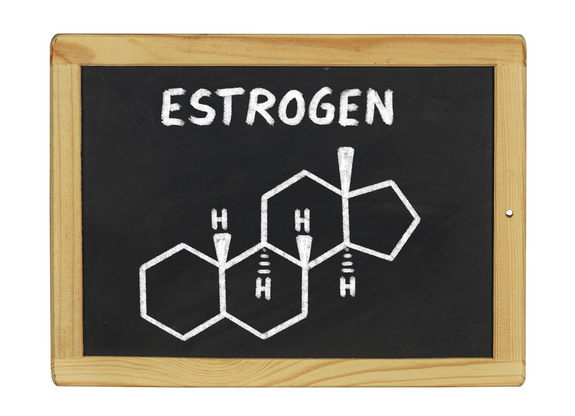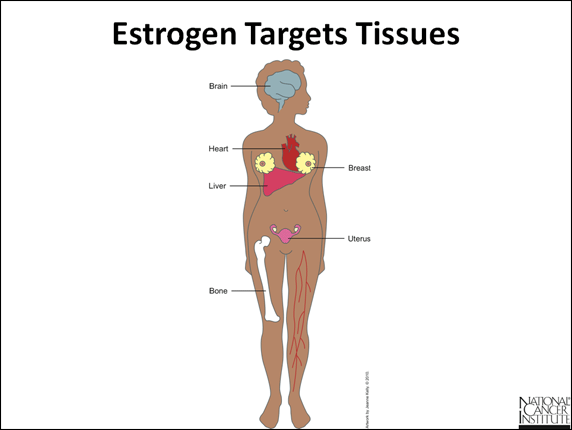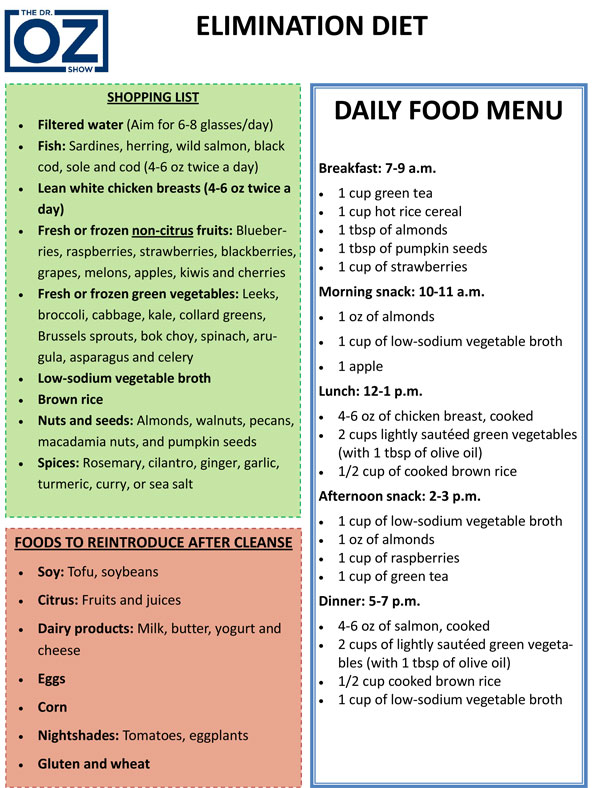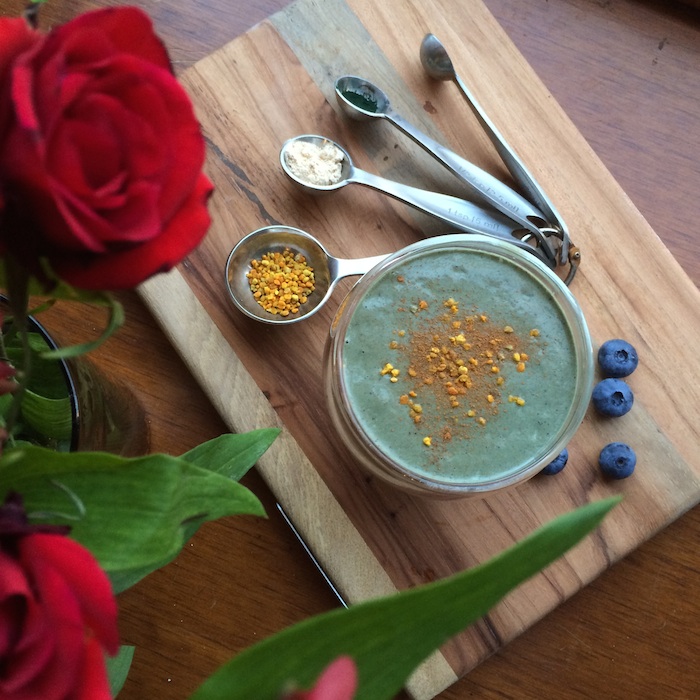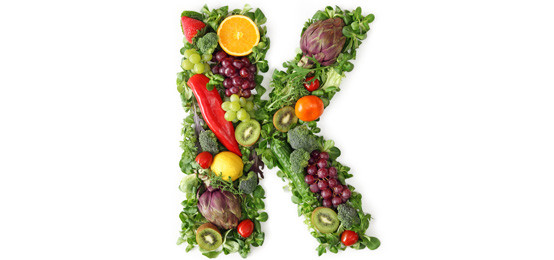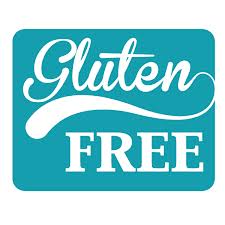Spring Kidney Cleansing Smoothie and Juice Recipes!
Hello Informed Beauty - I truly believe the winter curse has broken! It's perfect time to hit the reset button in our internal + external beauty regime. Check out these GREAT SMOOTHIES that help to clear and support your oh-so-important kidneys.
Being that our kidneys are an important detoxification organ, it’s important that we learn to nourish them with the right foods. There are many beneficial herbs and foods we can include to support kidney health, and what better way to cleanse and support our kidneys than by juicing!
Here are 6 simple and delicious juice recipes that will help support the health of your kidneys and provide mild diuretic properties to help flush the kidneys of unwanted wastes.
Let’s get juicing…
Watermelon Flush
-
4 cups fresh watermelon, roughly chopped
-
Handful of fresh basil leaves
*Note: This recipes works well in a juicer or blender.
Parsley Purifier
-
½ cup fresh parsley
-
2 celery ribs
-
1 carrot
-
1 cucumber
Dandy-love
-
3 dandelion leaves
-
1/2 green apple
-
2 celery stalks
-
1/2 lemon
-
Chunk of broccoli stalk
Radiant-Radish
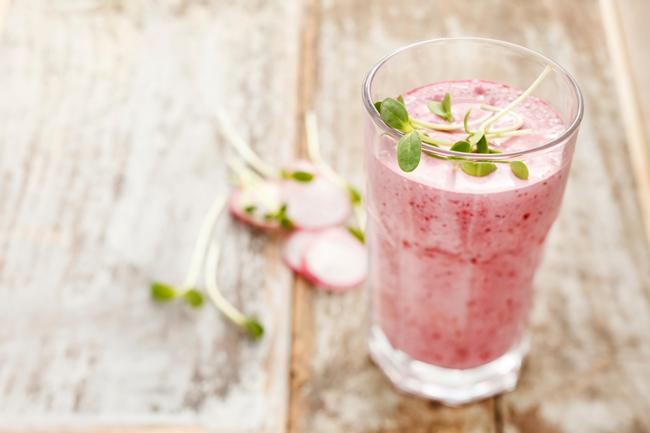
-
2 cups radishes, chopped
-
1 celery rib
-
1 cucumber
-
1/2 lemon
Mean & Green
-
Handful of spinach
-
Handful of kale
-
1/2 green apple
-
1/2 lemon
-
1-inch piece fresh ginger
-
½ cup fresh parsley
Cruciferous Goodness
-
1/2 head red cabbage
-
1/2 lemon
-
1 cucumber
-
Chunk of broccoli stalk
-
¼ cup fresh cilantro
All these recipes can be pressed through your juicer and enjoyed any time of day to cleanse and rejuvenate your kidneys and support overall health.
Thank you Guest Post: Young and Raw - http://www.youngandraw.com/6-kidney-cleansing-juice-recipes/
MN Local Farmers Market Guide
It's such a delight to see the sunshine and birds chirping their spring song. In light of a new season, it's that time of year to start thinking about the enjoyment of FRESH fruits and vegetables.
Here is a list of your MN Local Farmer's Markets!
Mother's Day weekend on May 10th will kick off the Spring outdoor season at the Mill City Farmers Market. It is located on Second Street and South Chicago Avenue in Minneapolis. Hours of operation are 8:00 AM to 1:00 PM. We hope to see you there.
Other Farmer's Markets in the area that are always fun to visit include:
 Minneapolis Farmers Market located at 312 East Lyndale Avenue North in Minneapolis. This market is open every day, April through December. Daily hours are 6:00 AM to 1:00 PM.
Minneapolis Farmers Market located at 312 East Lyndale Avenue North in Minneapolis. This market is open every day, April through December. Daily hours are 6:00 AM to 1:00 PM.
St. Paul Farmers Market is located at the corner of Fifth Street and Wall Street. This market is open Saturdays and Sundays from April to November. Saturday hours are 6;:00 AM to 1:00 PM and Sunday hours are 8:00 AM to 1:00 PM.
Nicollet Mall Farmers Market occupies a five-block area on Nicollet Mall (between 5th Street and 10th Street) and is open on Thursdays from May to October from 6:00 AM to 6:00 PM.
Midtown Farmer's Market is located on the corner of Lake Street and 22nd Avenue and is open from May to October on Tuesdays and Saturdays. Tuesday hours are 3:30 PM to 7:30 PM and Saturday hours are 8:00 AM to 1:00 PM.
There are many more farmer's markets in cities and suburbs throughout the Metro area. To find your nearest farmer's market go to LocalHarvest.com.
90% of all food allergies are caused by 8 common foods! Do you have these symptoms?
Eight common foods are causing 90 percent of all food allergies! Do you have any of these symptoms?
This may surprise you, but eight common foods – milk, eggs, peanuts, tree nuts, fish, soy, wheat and shellfish – cause 90 percent of all food allergies. Chances are, half of those items make common appearances in your daily diet. They could, however, be jacking up your cortisol, decreasing your immune strength, and keeping you from achieving your wellness (and weight loss!) goals.
Allergies versus intolerances While the cause of true food allergies – the kind that produces severe or anaphalatic reactions — involve IgE antibodies in the immune system, food intolerances can arise when we consume the same foods day after day with little variety. This dietary stagnation causes the body to become “sensitized” to the food. In common parlance, the terms “allergy,” “sensitivity” and “food intolerance” are often used interchangeably, but sensitivities and intolerances are not true IgE allergies.
Food sensitivities or intolerances usually involve a different set of immune system antibodies called IgG antibodies. Symptoms are less intense and typically do not appear immediately, but rather within 12–48 hours, after eating the offending foodstuff. Heartburn, headaches, difficulty getting out of bed in the morning, looking tired even after sufficient sleep, an inability to lose weight, bloating and relentless water retention can all be related to food sensitivities or intolerances.
Because the connection between the symptom and a specific food can be difficult to pinpoint, those who suffer these discomforts often go on feeling worse and worse as their immune system takes a constant beating.
Many of us with food sensitivities don’t even realize how bad we feel until the problematic foods are removed from our diet. Then suddenly getting out of bed becomes easier, our energy, mood and concentration improve and joint pain, headaches and sinus congestion disappear. Here’s a handy chart on common symptoms associated with food sensitivities. You may be nodding your head to more than a few of these side effects:
Symptoms commonly associated with food intolerances/sensitivities
Digestive: Gas Bloating Abdominal cramping Loose stools Indigestion or heartburn Constipation GERD (reflux) Blood in the stool Lactose intolerance Inflammatory bowel disease Irritable bowel Syndrome
Skin: Eczema Psoriasis Acne Hives
Mental/Emotional: Irritability Anxiety Depression Food cravings Insomnia
General: Joint pain or stiffness Arthritis (rheumatoid) Fatigue Difficulty getting out of bed in the morning Headaches Migraines Malaise Weight gain Water retention Puffy eyes Dark under-eye circles High blood pressure Cellulite Difficulty losing weight
Nasal/Immune system: Sinus congestion Ear congestion Post-nasal drip Seasonal allergies Hay fever Asthma Chronic ear infections Itching in the ears Itchy mouth Runny nose Watery eyes Sneezing
Identifying your trigger foods To get to the bottom of your symptoms, I recommend that you do a 14-day elimination diet where you remove the most common food allergens from your diet to give your body a break, alleviate stress off your immune system, and detox overall. Slowly re-introducing each food after a 14-day break can allow you to connect particular symptoms with your food choices.
All that experimenting with different foods may sound like a major inconvenience, but the results can be invaluable. I recall one patient who had suffered with headaches for 20 years – they were gone after just two weeks of avoiding wheat. Another woman had bleeding from the bowel for two years – it was gone after one week on a dairy-free diet.
Uncovering food sensitivities is a powerful process to explore. But what you do with the information you gain is up to you. Once you’ve determined the effects of particular foods on your health, you have to decide whether or not you want to continue eating them.
Check out Dr. Oz's Elimination Diet HERE!
Plan B for determining your food allergies If you don’t want to do a 14-day elimination diet you can consider IgG food allergy testing. Although I encourage you to go through the process of food elimination and reintroduction because it’s so effective, you can choose to have a blood test to identify your IgG food allergies instead. This test identifies the presence of IgG antibodies to certain foods. Positive results to certain foods should be followed with the removal of those foods from your diet for a period of two to six months.
Guest Post: Natasha Turner, N.D., is a naturopathic doctor
Spring Superfood Smoothie (recipe inside)
Smoothie Recipe Key Beauty Ingredient: Superfoods!
Benefits of Superfoods: Superfoods are nutrient-dense foods that pack large doses of antioxidants, vitamins, minerals and polyphenols. I’ve included some of my favorites, all blended into this tasty smoothie that will help reveal fresh and dewy skin just in time for spring.
-
Pumpkin Seeds – Filled with amino acids and unsaturated fats including skin-loving omega-3’s.
-
Lucuma – This low-glycemic sweetener contains many nutrients including beta-carotene, iron, zinc, vitamin B3, calcium and protein. Has a lovely maple flavor.
-
Maca – Amazing adaptogenic-like qualities nurture and balance the body’s endocrine system. It also energizes naturally and can aid in reproductive function, helping to balance hormones and increase fertility.
-
Bee Pollen – This food of the young bee is approximately 40% protein. It is considered one of nature’s most completely nourishing foods. It can help alleviate seasonal allergies (but must be taken 6 weeks before and throughout the season).
-
Spirulina – Part of the blue/green algae family, it is one of the most nutritious and concentrated food sources on the planet. It’s a whopping 65% protein with anti-inflammatory amino acids. It can also help with seasonal allergies.
-
Chia Seeds – The single richest source of plant-based omega-3 fatty acids and its soluble and insoluble fiber helps keep digestion moving supporting proper elimination and therefore detoxification.
-
Blueberries – Besides being delicious, they are filled with phytochemicals, flavinoids and soluble fiber to tame inflammation and boost beauty.
Spring Superfood Smoothie Directions:
Fill blender with…
-
10 oz pumpkin seed milk (get the recipe HERE)
-
1 handful of leafy greens (curly kale, spinach or romaine)
-
1 tsp lucuma
-
1 tsp maca
-
1 tsp bee pollen
-
½ tsp spirulina
-
1 tsp chia seeds
-
1 tsp cinnamon
-
¼ cup frozen organic blueberries
-
¼ avocado
-
2-3 large ice cubes
-
Pinch of sea salt
-
Stevia to taste
Blend ingredients until smooth and enjoy your organic Spring Superfood Smoothie.
Blog Post by Laurisa Truemper and Organic Beauty Talk
A missing link! Vitamin K2 and your Skin + Bone Health!
Vitamin K2 and it's amazing role in our 'Beautiful Health" both internal and external.
New evidence has confirmed that vitamin K2′s role in the body extends far beyond blood clotting to include protecting us from heart disease, ensuring healthy skin, forming strong bones, promoting brain function, supporting growth and development and helping to prevent cancer – to name a few. In fact, vitamin K2 has so many functions not associated with vitamin K1 that many researchers insist that K1 and K2 are best seen as two different vitamins entirely.
Vitamin K2′s role in the body includes protecting us from heart disease, forming strong bones, promoting brain function, supporting growth and development and helping to prevent cancer – to name a few. It performs these functions by helping to deposit calcium in appropriate locations, such as in the bones and teeth, and prevent it from depositing in locations where it does not belong, such as the soft tissues. One of the health benefits of vitamin K2 not often discussed is its role in ensuring healthy skin, and this vitamin is likely beneficial for preventing wrinkling and premature aging.
Adequate dietary vitamin K2 prevents calcification of our skin’s elastin, the protein that gives skin the ability to spring back, smoothing out lines and wrinkles. This is because K2 is necessary for activation of matrix proteins that inhibit calcium from being deposited in elastin fibers and keeping these fibers from hardening and causing wrinkles. In fact, recent research suggests that people who cannot metabolize vitamin K end up with severe premature skin wrinkling. Vitamin K2 is also necessary for the proper functioning of vitamin A- and D- dependent proteins. As I discussed in the first article in this series, vitamin A is essential for proper skin cell proliferation, and cannot work properly if vitamin K2 is not available. Therefore, vitamin K2 is important in the treatment of acne, keratosis pillaris, and other skin symptoms of vitamin A deficiency.
It’s important to get adequate amounts of dietary vitamin K2, particularly if trying to heal the skin or prevent wrinkles.
Foods high in vitamin K2
It is important to note that commercial butter and other dairy products are not significantly high sources of vitamin K2, as most dairy cattle in our country are fed grains rather than grass. It is the grazing on vitamin K1-rich grasses that leads to high levels of vitamin K2 in the dairy products of animals, so be sure to look for grass-fed dairy products when trying to increase your intake of vitamin K2. (11)
 A great all-around supplement for skin health is Green Pasture’s Fermented Cod Liver Oil and Butter Oil blend. It has a great mix of vitamins A, D, K2, and omega-3s in the proper ratios to help maximize skin health, especially in people with acne.
A great all-around supplement for skin health is Green Pasture’s Fermented Cod Liver Oil and Butter Oil blend. It has a great mix of vitamins A, D, K2, and omega-3s in the proper ratios to help maximize skin health, especially in people with acne.
New research has expanded our understanding of the many important roles of vitamin K2. Proof is being published at a rapid pace to bring clarity to one of the most poorly understood by medical authorities and the general public.
For more information on VK2 and how to source this supplementally, contact us at Kassie@kasiaorganicsalon.com.
Guest Post Reference For more information on VK2 - head over to Chris's Blog: http://chriskresser.com/vitamin-k2-the-missing-nutrient
SPRING FORWARD: Two Quick Liver Cleansing Yum-a-licious Smoothie Recipes!
It's that time of year - to SPRING FORWARD!
Spring is a time of change, a time to detox, and a time for......GREEN!
Liver Season
Bitter greens are a foundation food to bring into the spring diet. Bitters contain compounds that help the liver with its multitude of functions.
About the liver: It is the second largest organ in the human body and performs over 500 different jobs! We breathe, ingest, and absorb toxic compounds daily. In addition, our bodies produce poisonous compounds during normal biochemical reactions. It is the liver who is responsible for filtering the blood to remove these toxins and excess hormones. The liver is responsible for changing the chemical structure of those toxins to make them water soluble so that they can be excreted in the urine. LOVE your liver, please!
Hidden in your fat?
Many of the most threatening and dangerous toxins are fat soluble. Unless these compounds are detoxified they are more likely to lodge in your cells and remain there causing damage. This is why a diet high in potential pesticides and toxins dramatically increases your intake of toxic compounds. (Organic and sustainably raised animal products have less toxic compounds and should be taken seriously). By supporting your liver with certain foods, you can detoxify and dramatically increase your energy and quality of life, energy, and beauty!
Now, what foods support the liver? We are looking for foods that contain nutrients to produce and activate enzymes involved in the various phases of detoxification.
So what are they?
-
Sulfur-containing foods such as onions, garlic, and legumes are a good start.
-
Cabbage family vegetables such as broccoli, Brussels sprouts, kale, and cabbage are very important.
-
Foods high in water-soluble fiber such as pears, apples, and oatmeal are fairly easy to consume on a regular basis.
-
Certain spices even help such as turmeric, cinnamon, and licorice root. Hmmm, you see why we eat a lot of curry!
-
And lastly, greens, glorious greens! All green foods are particularly important in liver health.
Let's look at a few greens......
Dandelion greens, sorrel, baby kale, collard greens, and wild mustard. Others may include arugula, spinach, mizuna, tat soi, and sunflower spouts.
All of these wonderful fresh, raw greens can be blended into a delicious-tasting smoothie! This is also an easy way for you and your children to get a healthy dose of green foods into your daily diet.
Below is the recipe that can be changed everyday depending on what is available. Soon the local fruits from the season will be available and you can change up our the recipe.
The key is - SPRING is a time for CLEANING OUT THE LIVER AND GALLBLADDER. The intake of greens, bitters, and alkalizing agents will be beneficial as your body, mind, and soul transition seasons.
Two Yum-a-licious Spring Green Smoothie Recipes
I use a Vita-Mix for this, but if you have a smaller blender then cut this recipe in half.
Spring Cleanse Smoothie with Cucumber, Pear and Kale
1/2 cucumber, sliced1 pear, sliced
1 cup kale
1/2 cup water
Sprig of mint to garnish (optional)
Spring Cleanse Smoothie with Apple, Ginger, Pear and Kiwi
2 ripe pears, cored
2 apples, cored
2 kiwis
1 very large chunk of fresh ginger
2 lemons, juiced
water
Blend the fruit mixture until smooth and creamy.
Gluten-Free Beauty: You may have these symptoms! ( full ingredient guide inside)
Celiac Disease (CD)/Gluten Intolerance (GI) affects 1 out of 133 Americans, or about 3 million people. This autoimmune disorder is genetic and leaves one unable to digest gluten properly. The result of this autoimmune disorder is damage and flattening to the villi that are responsible for absorption of nutrients. Those with CD have more advanced damage to their intestine as compared to those with GI, however, both are unable to tolerate gluten and have resulting health conditions. Amongst this community (and others without these conditions) there are some that also have what is called an IgE antibody response to gluten.
This reaction is an allergy that causes the skin to flare in ways such as redness, swelling, acne or rashes. The amount of those with both intolerances to gluten in the gut and on the skin is unknown but it appears more are popping up daily. Gluten is a protein found in barley, rye, oats, wheat and spelt. Oats are gluten free but research has shown that there is so much cross contamination with processing in the same places that wheat is processed that they test high for gluten.
However, now gluten free oats are available that are grown and processed apart from wheat. Exposure to gluten for someone with CD/GI can cause a myriad of health conditions such as lymphomas, osteoporosis anemia and migraines. Along with these health conditions some, but not all, experience digestive problems; like gas, bloating, constipation or diarrhea.
- Fatigue
- Gastrointestinal distress (gas, bloating, diarrhea, constipation, vomiting, reflux)
- Headaches (including migraines)
- Infertility
- Mouth sores
- Weight loss/gain
- Inability to concentrate
- Moodiness/depression
- Amenorrhea/delayed menarche (menstrual cycles)
- Bone/joint/muscle pain
- Dental enamel hypoplasia
- Short stature
- Seizures
- Tingling numbness in the legs
- Abnormal liver test
- Addison's disease
- Alopecia
- Anemia
- Ataxia
- Autoimmune hepatitis
- Chronic abdominal pain
- Chronic fatigue
- Crohn's disease
- Dermatitis herpetiformis
- Down syndrome
- Epilepsy
- Family history of celiac disease
- Gall bladder disease
- Hyperthyroidism/hypothyroidism
- Total IgA deficiency
- Insulin-dependent diabetes (type 1)
- Infertility/spontaneous abortions/low birth-weight babies
- Iron deficiency
- IBS (Irritable Bowel Syndrome)
- Malnutrition
- Multiple sclerosis
- Non Hodgkin's lymphoma
- Osteoporosis, osteopenia, osteomalacia
- Pancreatic disorders
- Pathologic fractures
- Peripheral neuropathy
- Primary biliary cirrhosis
- Psoriasis
- Recurrent stomatisits
- Rheumatoid arthritis
- Scherosing cholangitis
- Sjogren syndrome
- Systemic lupus
- Turner syndrome
- Ulcerative colitis
- Vitiligo
At this time, the only treatment for CD/GI is to avoid gluten completely.
Safe List - Foods & Ingredients Safe for a Gluten-Free Diet
Acacia Gum
Acorn Quercus
Adipic Acid
Adzuki Bean
Acacia Gum
Agar
Alcohol (Spirits - Specific Types)
Alfalfa
Algae
Algin
Alginate
Allicin
Almond Nut
Aluminum
Amaranth
Annatto
Annatto Color
Apple Cider Vinegar
Arabic Gum
Arrowroot
Artichokes
Aspartame (can cause IBS symptoms)
Aspic
Ascorbic Acid
Astragalus Gummifer
Baking Soda & Powder (check)
Balsamic Vinegar
Beans
Bean, Adzuki
Bean, Hyacinth
Bean, Lentil
Bean, Mung
Bean Romano (Chickpea)
Bean Tepary
Benzoic acid
Besan
Betaine
BHA
BHT
Beta Carotene
Biotin
Buckwheat
Butter (check additives)
Butylated Hydroxyanisole
Butyl Compounds
Calcium Carbonate
Calcium Caseinate (Contains MSG)
Calcium Chloride
Calcium Disodium
Calcium Phosphate
Calcium Silicate
Calcium Stearate
Calcium Sulfate
Camphor
Canola Oil
Caprylic Acid
Carageenan Chondrus Crispus
Carboxymethylcellulose
Carnauba Wax
Carob Bean
Carob Bean Gum
Carob Flour
Carrageenan
Casein
Cassava Manihot Esculenta
Castor Oil
Cellulose
Cellulose Gum
Cetyl Alcohol
Cheeses
- (check ingredients)
Chestnuts
Chickpea
Chlorella
Chymosin
Citric Acid
Collagen
Corn
Corn Meal
Corn Flour
Cornstarch
Corn Syrup
Corn Syrup Solids
Corn Swetener
Cortisone
Cotton Seed Oil
Cowitch
Cowpea
Cream of Tartar
Cysteine, L
Demineralized Whey
Desamidocollagen
Dextrose
Dioctyl Sodium
Distilled Vinegar
Eggs
Elastin
Ester Gum
Fish (fresh)
Flaked Rice
Flax
Folic Acid-Folacin
Formaldehyde
Fructose
Fruit (including dried)
Fumaric Acid
Gelatin
Glutamate (free)
Glutamic Acid
Glutamine (amino acid)
Glycerides
Glycerol Monooleate
Glycol Monosterate
Glycol
Glycolic acid
Gram flour (chick peas)
Grits, Corn
Guar Gum
Hemp
Herbs
Honey
Hyacinth Bean
Hydrogen Peroxide
Hydrolyzed soy protein
Iodine
Inulin
Invert Sugar
Job's Tears
Kasha (roasted buckwheat)
Keratin
Kudzu Root Starch
Lactic Acid
Lactose
Lanolin
Lecithin
Lentil
Lipase
Locust Bean Gum
Magnesium Carbonate
Magnesium Hydroxide
Maize Maize Waxy
Malic Acid
Maltitol
Manioc
Masa
Masa Flour
Masa Harina
Meat (fresh)
Methyl Cellulose
Microcrystallin Cellulose
Milk
Millet
Milo
Mineral Oil
Mineral Salts
Monosodium Glutamate MSG (made in USA)
Monopotassium Phosphate
Mung Bean
Musk
Niacin-Niacinamide
Nuts (except wheat, rye & barley)
Nut, Acron
Nut, Almond
Oats
Oils and Fats
Oleyl Alcohol/Oil
Paraffin
Peas
Pea - Chick
Pea - Cow
Pea Flour
Pepsin
Peru Balsam
Petrolatum
Phenylalanine
Pigeon Peas
Polenta
Polyethylene Glycol
Polyglycerol
Polysorbates
Potassium Citrate
Potassium Iodide
Potassium Sorbate
Potatoes
Potato Flour
Prinus
Pristane
Propolis
Propylene Glycol
Propylene Glycol Monosterate
Propyl Gallate
Psyllium
Pyridoxine Hydrochloride
Quinoa
Ragi
Rape
Rennet
Reticulin
Rice
Rice Flour
Rice Vinegar
Romano Bean (chickpea)
Rosin
Royal Jelly
Sago Palm
Sago Flour
Saifun (bean threads)
Scotch Whisky
Seaweed
Seeds (except wheat, rye & barley)
Seed - Sesame
Seed - Sunflower
Sphingolipids
Soba (be sure it's 100% buckwheat)
Sodium Acid Pyrophosphate
Sodium Alginate
Sodium Ascorbate
Sodium Benzoate
Sodium Caseinate
Sodium Citrate
Sodium Erythrobate
Sodium Hexametaphosphate
Sodium Lauryl Sulfate
Sodium Nitrate
Sodium Phosphate
Sodium Silacoaluminate
Sodium Stannate
Sorbic Acid
Sorbitol-Mannitol (can cause IBS symptoms)
Sorghum
Sorghum Flour
Soy
Soybean
Soy Lecithin
Spices (pure)
Spirits (Specific Types)
Stearates
Stearamide
Stearamine
Stearic Acid
Subflower Seed
Succotash (corn and beans)
Sucrose
Sulfosuccinate
Sulfites
Sulfur Dioxide
Sweet Chestnut Flour
Tallow
Tapioca
Tapioca Flour
Tarrow Root
Tartaric Acid
TBHQ is Tetra or Tributylhydroquinone
Tea
Tea-Tree Oil
Teff
Teff Flour
Tepary Bean
Thiamine Hydrochoride
Tofu-Soya Curd
Tolu Balsam
Tragacanth
Tragacanth Gum
Tri-Calcium Phosphate
Turmeric (Kurkuma)
Tyrosine
Urad/Urid Beans
Urad/Urid Dal (peas) Vegetables
Urad/Urid flour
Vanillin
Vinegars (Specific Types)
Vitamin A (retinol)
Waxy Maize
Whey
White Vinegar
Wines
Wine Vinegars (& Balsamic)
Wild Rice
Xanthan Gum
Yam Flour
Yogurt (plain, unflavored)
Forbidden List - Foods and Ingredients Not Safe for a Gluten-Free Diet
(List found onwww.celiac.com)
Abyssinian Hard (Wheat triticum durum)
Abyssinian Hard (Wheat triticum durum)
Alcohol (Spirits - Specific Types)
Amp-Isostearoyl Hydrolyzed Wheat Protein
Barley Grass (can contain seeds)
Barley Hordeum vulgare
Barley Malt
Beer
Bleached Flour
Blue Cheese (made with bread)
Bran
Bread Flour
Brewer's Yeast
Brown Flour
Bulgur (Bulgar Wheat/Nuts)
Bulgur Wheat
Cereal Binding
Chilton
Club Wheat (Triticum aestivum subspecies compactum)
Common Wheat (Triticum aestivum)
Couscous
Dextrimaltose
Disodium Wheatgermamido Peg-2 Sulfosuccinate
Durum wheat (Triticum durum)
Edible Starch
Einkorn (Triticum monococcum)
Emmer (Triticum dicoccon)
Farina Graham
Filler
Fu (dried wheat gluten)
Germ
Graham Flour
Granary Flour
Groats (barley, wheat)
Hard Wheat
Hydrolyzed Wheat Gluten
Hydrolyzed Wheat Protein
Hydrolyzed Wheat Protein Pg-Propyl Silanetriol
Hydrolyzed Wheat Starch
Hydroxypropyltrimonium Hydrolyzed Wheat Protein
Kamut (Pasta wheat)
Malt
Malt Extract
Malt Syrup
Malt Flavoring
Malt Vinegar
Macha Wheat (Triticum aestivum)
Matzo Semolina
Oriental Wheat (Triticum turanicum)
Pasta
Pearl Barley
Persian Wheat (Triticum carthlicum) Poulard Wheat (Triticum turgidum)
Polish Wheat (Triticum polonicum)
Rice Malt (if barley or Koji are used)
Rye
Seitan
Semolina
Semolina Triticum
Shot Wheat (Triticum aestivum)
Shoyu (soy sauce)Small Spelt
Soba Noodles
Soy Sauce
Spirits (Specific Types)
Spelt (Triticum spelta)
Sprouted Wheat or Barley
Stearyldimoniumhydroxypropyl Hydrolyzed Wheat Protein
Strong Flour
Suet in Packets
Tabbouleh
Teriyaki Sauce
Textured Vegetable Protein - TVP
Timopheevi Wheat (Triticum timopheevii)
Triticale X triticosecale
Triticum Vulgare (Wheat) Flour Lipids
Triticum Vulgare (Wheat) Germ Extract
Triticum Vulgare (Wheat) Germ Oil
Udon (wheat noodles)
Vavilovi Wheat (Triticum aestivum)
Vegetable Starch
Certain Vitamins/supplements
Wheat, Abyssinian Hard triticum durum
Wheat Amino Acids
Wheat Bran Extract
Wheat, Bulgur
Wheat Durum Triticum
Wheat Germ Extract
Wheat Germ Glycerides
Wheat Germ Oil
Wheat Germamidopropyldimonium Hydroxypropyl Hydrolyzed Wheat Protein
Wheat Grass (can contain seeds)
Wheat Nuts
Wheat Protein
Wheat Triticum aestivum
Wheat Triticum Monococcum
Wheat (Triticum Vulgare) Bran Extract
Whole-Meal Flour
Wild Einkorn (Triticum boeotictim)
Wild Emmer (Triticum dicoccoides)
Additional Information to know about a Gluten-Free Diet
- Read all rice and soy beverages to be sure no barley enzymes were used.
- Sprouted wheat and spelt are not gluten-free
- Read all lotions, shampoos, conditioners, creams, soaps, toothpastes and cosmetics to be sure they are gluten-free
- Do not directly lick stamps, envelopes or other gummed labels. Use a sponge or a damp cloth when possible
- Many prescription and over the counter medicines contain gluten. Check out these websites to be sure your prescription medication is gluten-free:http://homepage.mac.com/sholland/celiac/GFmedlist.pdf,https://www.pfizerpro.com/product_info/chantix_pi_ingredients.jsp
- Be sure all spices are gluten free


